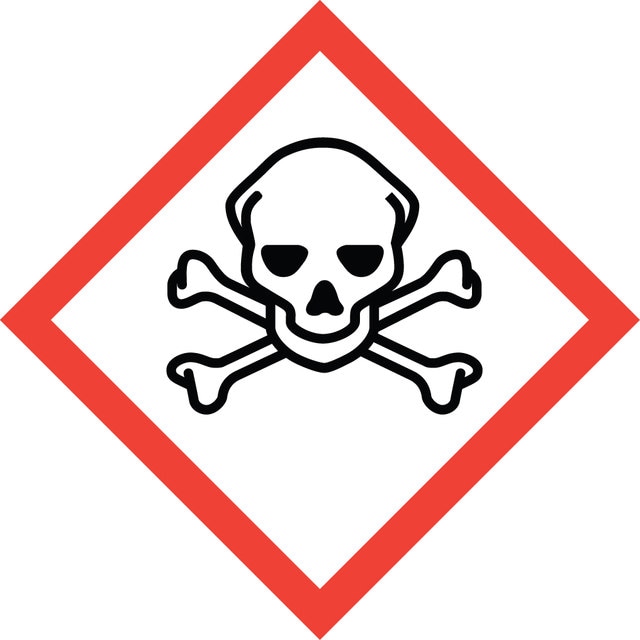蒸汽密度
5.4 (vs air)
质量水平
蒸汽压
0.09 mmHg ( 25 °C)
方案
99%
表单
crystals
自燃温度
500 °F
沸点
242 °C (lit.)
mp
80-83 °C (lit.)
密度
1.298 g/mL at 25 °C (lit.)
SMILES字符串
[O-][N+](=O)c1ccc(Cl)cc1
InChI
1S/C6H4ClNO2/c7-5-1-3-6(4-2-5)8(9)10/h1-4H
InChI key
CZGCEKJOLUNIFY-UHFFFAOYSA-N
正在寻找类似产品? 访问 产品对比指南
警示用语:
Danger
危险分类
Acute Tox. 3 Dermal - Acute Tox. 3 Inhalation - Acute Tox. 3 Oral - Aquatic Chronic 2 - Carc. 2 - Muta. 2 - STOT RE 2
储存分类代码
6.1A - Combustible acute toxic Cat. 1 and 2 / very toxic hazardous materials
WGK
WGK 3
闪点(°F)
255.2 °F - closed cup
闪点(°C)
124 °C - closed cup
法规信息
危险化学品
此项目有
Ruiyang Qu et al.
Nanomaterials (Basel, Switzerland), 8(9) (2018-09-08)
The solvent-free selective hydrogenation of nitrobenzene was carried out using a supported AuPd nanoparticles catalyst, prepared by the modified impregnation method (MIm), as efficient catalyst >99% yield of aniline (AN) was obtained after 15 h at 90 °C, 3 bar
Qiang Chen et al.
Chemistry, an Asian journal (2018-05-01)
Platinum nanoparticles encapsulated into zeolite Y (Pt@Y catalyst) exhibit excellent catalytic selectivity in the hydrogenation of substituted nitroarenes to form the corresponding aromatic amines, even after complete conversion. With the hydrogenation of p-chloronitrobenzene as a model, the role of zeolite encapsulation
C Le et al.
Water science and technology : a journal of the International Association on Water Pollution Research, 63(7), 1485-1490 (2011-04-22)
Batch tests were conducted to evaluate the influences of several common dissolved anions in groundwater on the reduction of para-chloronitrobenzene (p-CNB) by zero-valent iron (ZVI). The results showed that p-CNB reduction was enhanced by both Cl(-) and SO(4)(2-). HCO(3)(-) could
Mustapha Oubenali et al.
ChemSusChem, 4(7), 950-956 (2011-06-10)
Carbon nanotubes (CNTs) and carbon nanofibers (CNFs) have been used for the first time to support ruthenium nanoparticles for the hydrogenation of p-chloronitrobenzene (p-CNB) to produce selectively p-chloroaniline. The preparation of well-dispersed ruthenium catalysts from the [Ru(3)(CO)(12)] precursor required activation
Yongjun Liu
Journal of hazardous materials, 166(2-3), 1495-1499 (2009-01-31)
Aqueous p-chloronitrobenzene (PCNB) decomposition induced by contact glow discharge electrolysis under various reaction conditions was investigated. Experimental results showed that, at voltage 450-550 V and initial concentration 50-500 mg/L, the decay of PCNB can be described by a first-order reaction
我们的科学家团队拥有各种研究领域经验,包括生命科学、材料科学、化学合成、色谱、分析及许多其他领域.
联系客户支持

